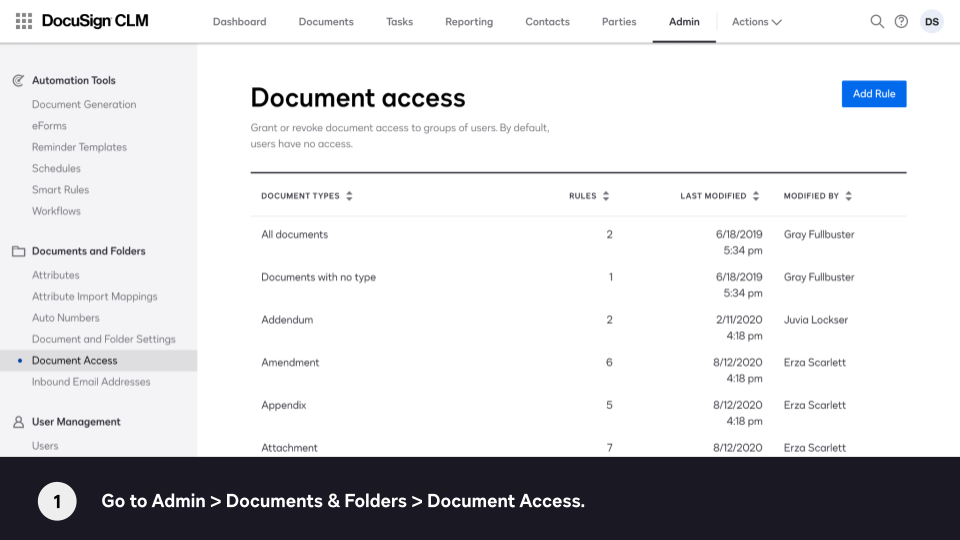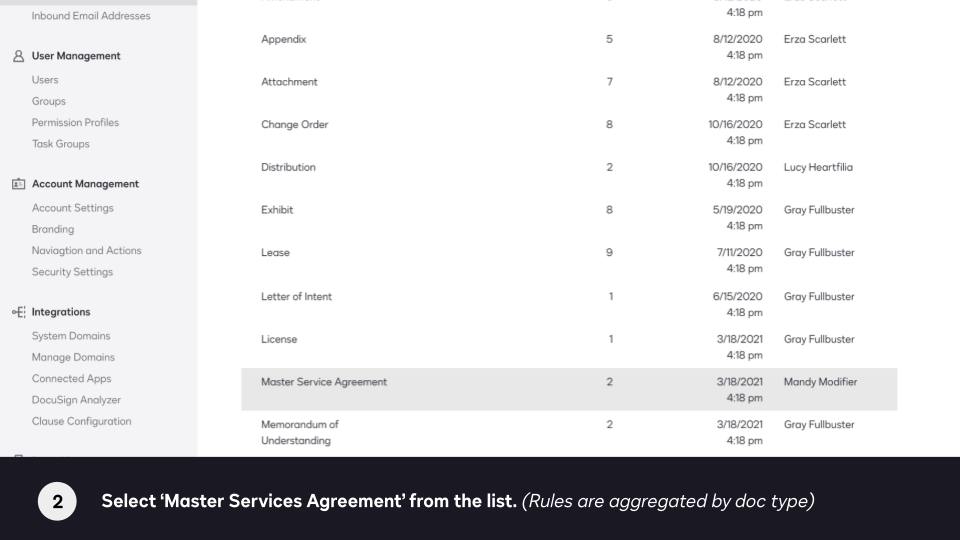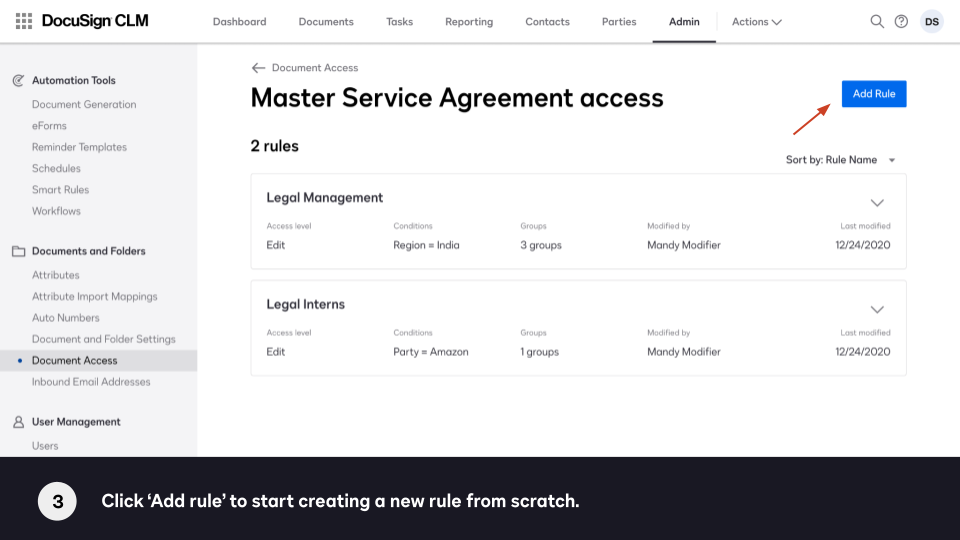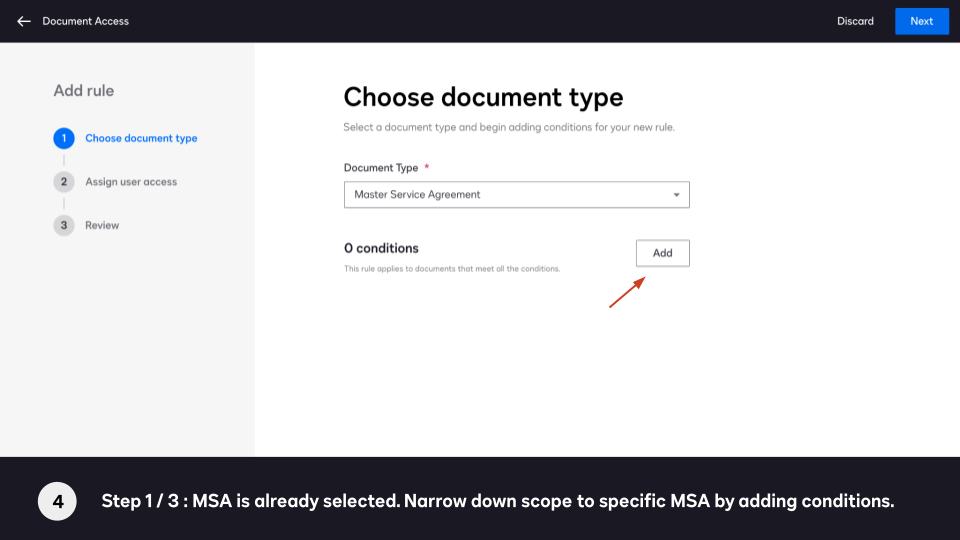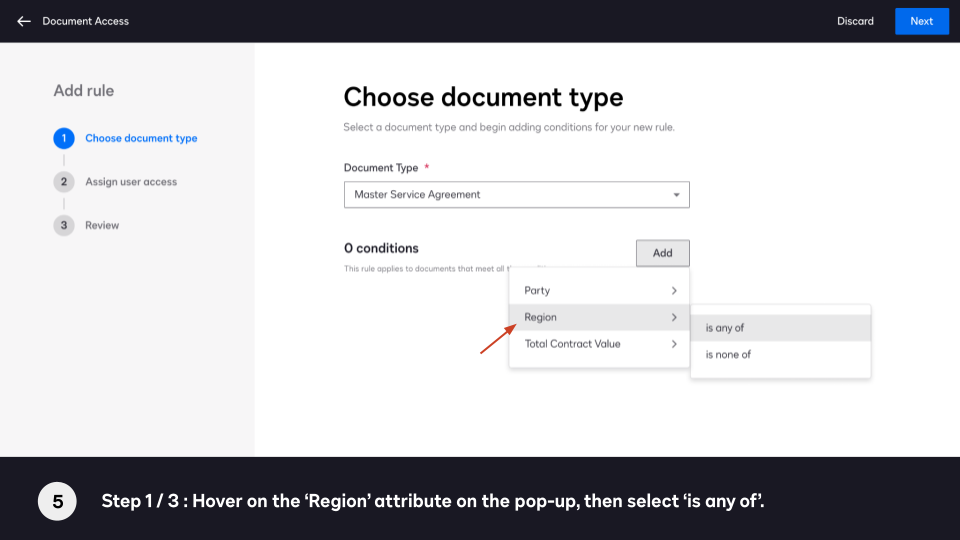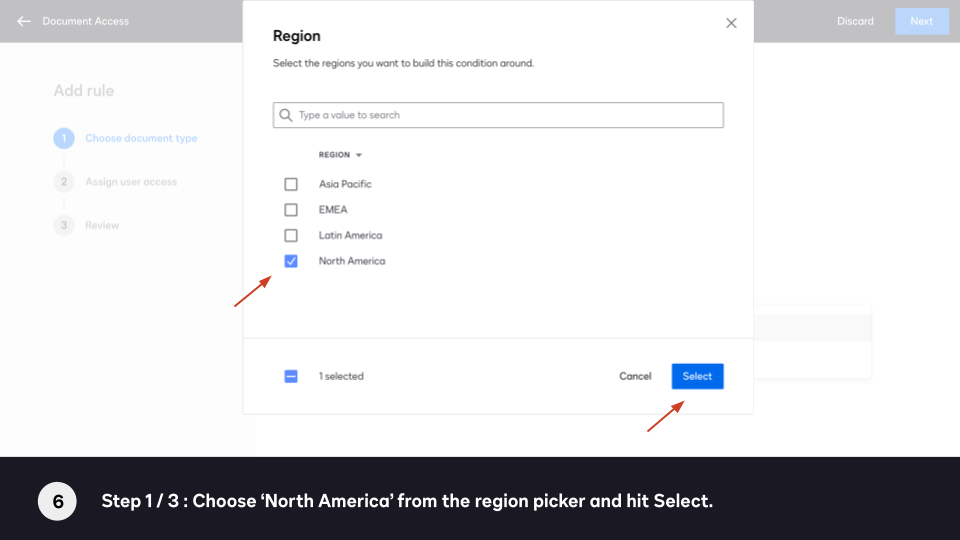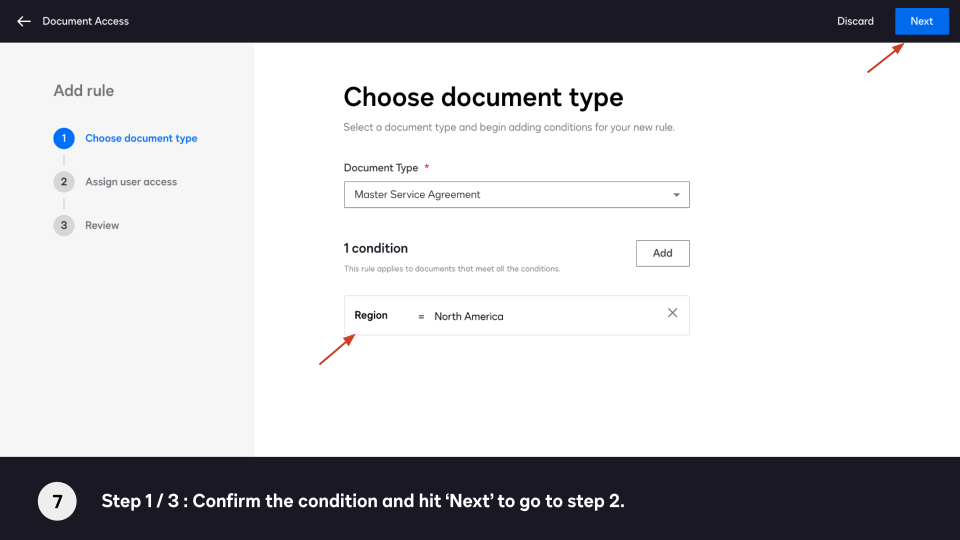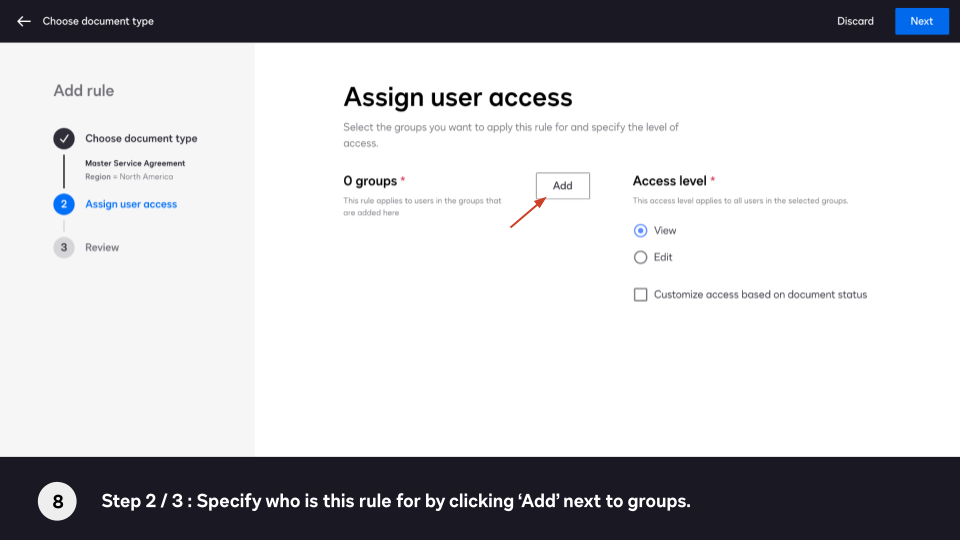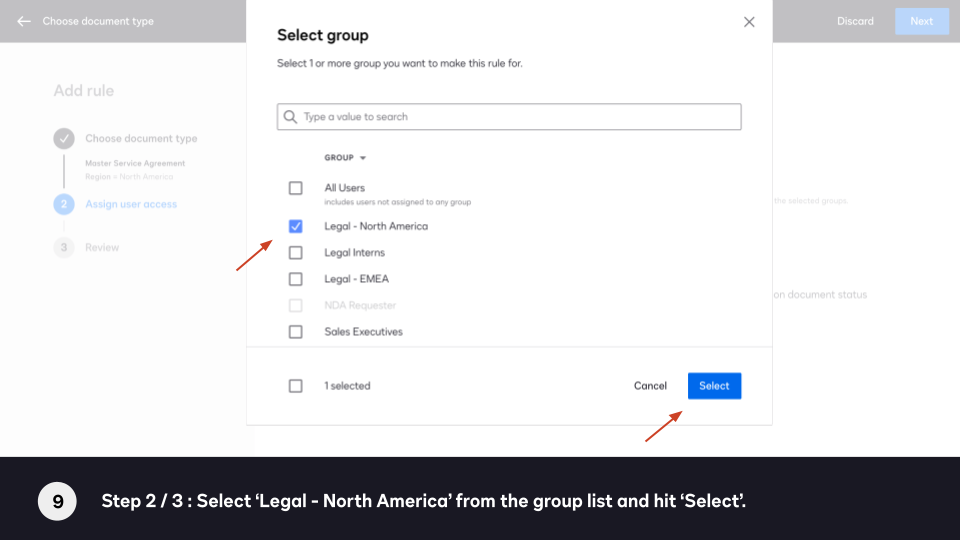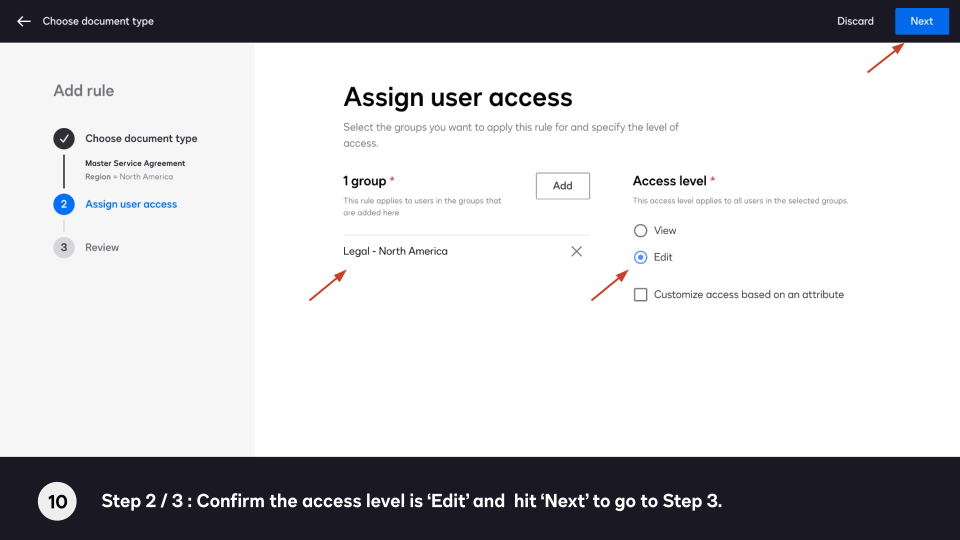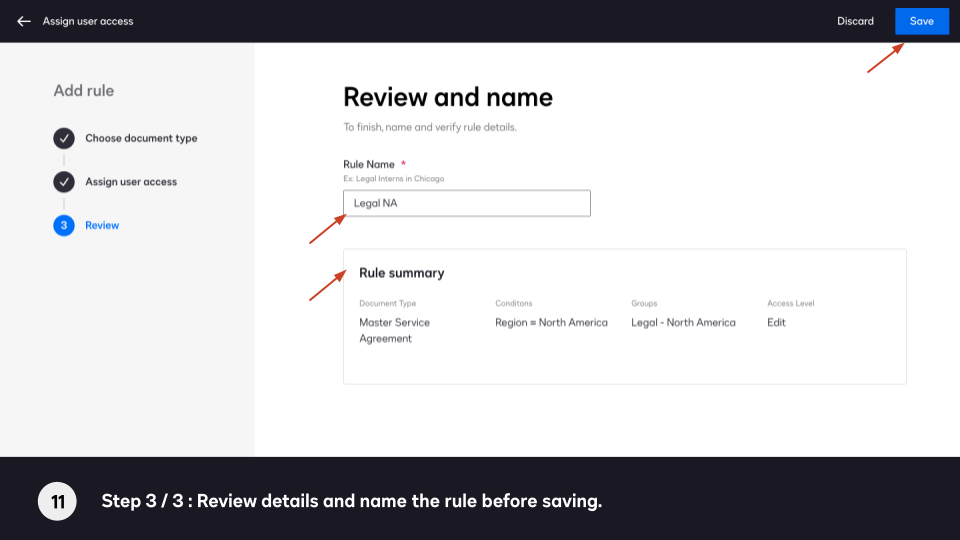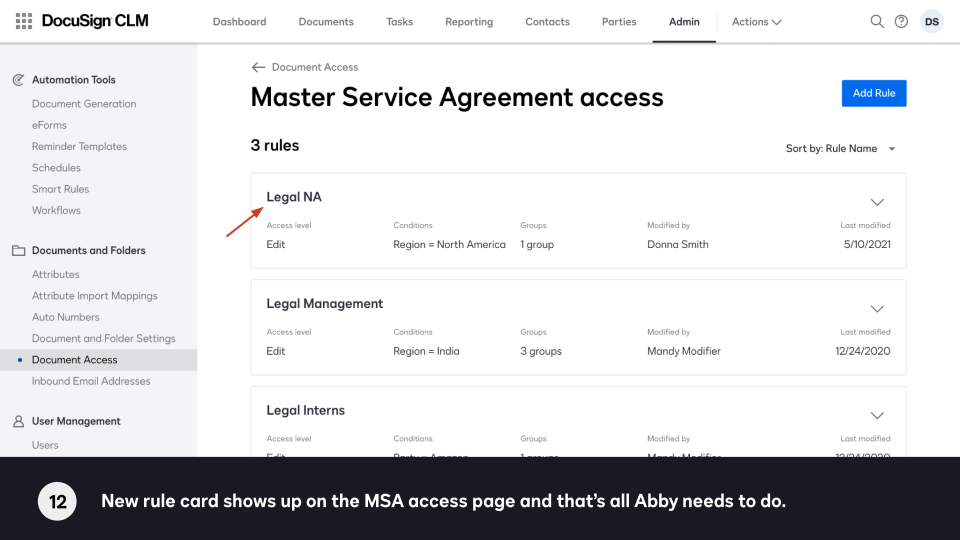Status
Shipped–GA
Timeline
May 2021 – Dec 2021
Type
Enhancement
My Role
Design lead
Prod-dev process
Agile
2 week sprints | 3-4 sprint deployment (internal release) bundled into 3 external annual releases
Deliverables
Exploratory concepts, High-fidelity prototypes
Contributors
Mariya Pak (PM)
Sara Holburt (Design Partner)
Jeff Caruso (Research)
Sedine San Agustin (Research)
Gus Cortez (Research)
Rigo Aguayo (Engineering Lead)
Robert Pfeiffle (IX+UI Copy)
Katie Lower (IX+UI Copy)
In DocuSign CLM, Admins used to manage access permissions for files stored in CLM through a folder-based security mechanism. To ensure desired access, admins had to make sure the documents were stored in appropriate folders. This was cumbersome, hard to scale, and was creating problems in keeping with the journey of a document in its agreement lifecycle.
The Document Access project termed ABAC (Attribute based Access control) was an initiative to replace the problematic folder-based security model with a dynamic, storage-location agnostic model that used document’s attributes (metadata) to determine user access.
Designs for the first version of ABAC wrapped up in late fall 2021. Dev work early 2022 with ongoing enhancements until its public release in the second half of 2022.
While external data on the customer reception wasn’t reported at the time of writing this case study, there were several wins for the project internally:
As contract language and terms change constantly during its life cycle mostly during negotiations but also afterwards (think renewals), that system that houses and manages contracts needs to adapt with the change in data to make it easier for users to work with them. Simple folder security just does not suffice for the needs of modern businesses and large organizations. As a consequence of lack of an enterprise grade document security solution in CLM, the business was facing following challenges:
The easiest way to understand document access control is to look at a B2C application that stores documents and is familiar to many of us. Let’s take a look at Google Drive, this is what access control look like there:
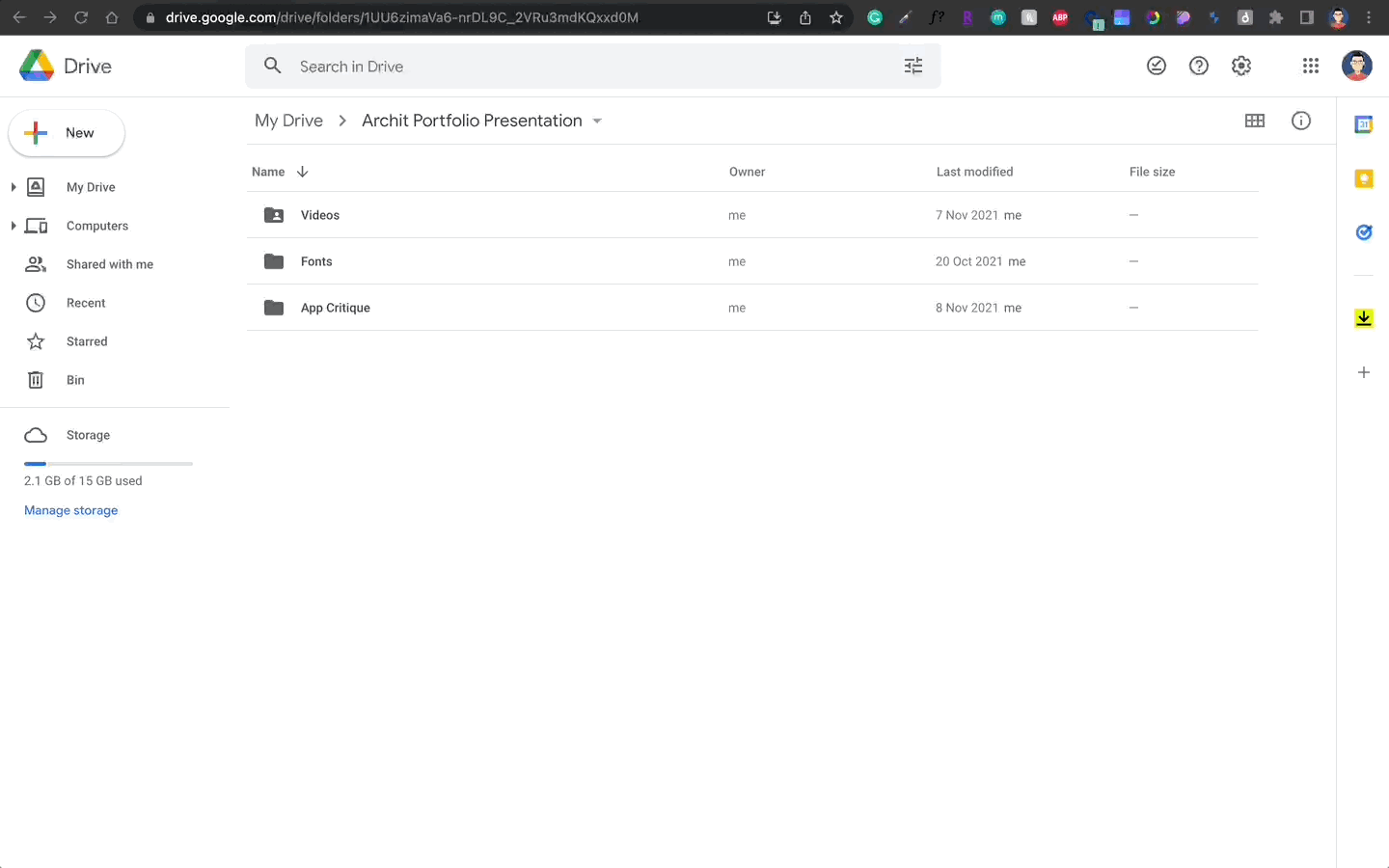
G-Drive: File–Folder Access
This basic model lets owners and administrators customize access permissions for each file or folder extending 1 of the 3 tiered permission sets to one or more users. The permission sets – Viewer, Commenter, and Editor determine the actions(view, download, comment, edit, delete) that the user can do on the file.
Features
Shortcomings
CLM: Old Folder Security Model
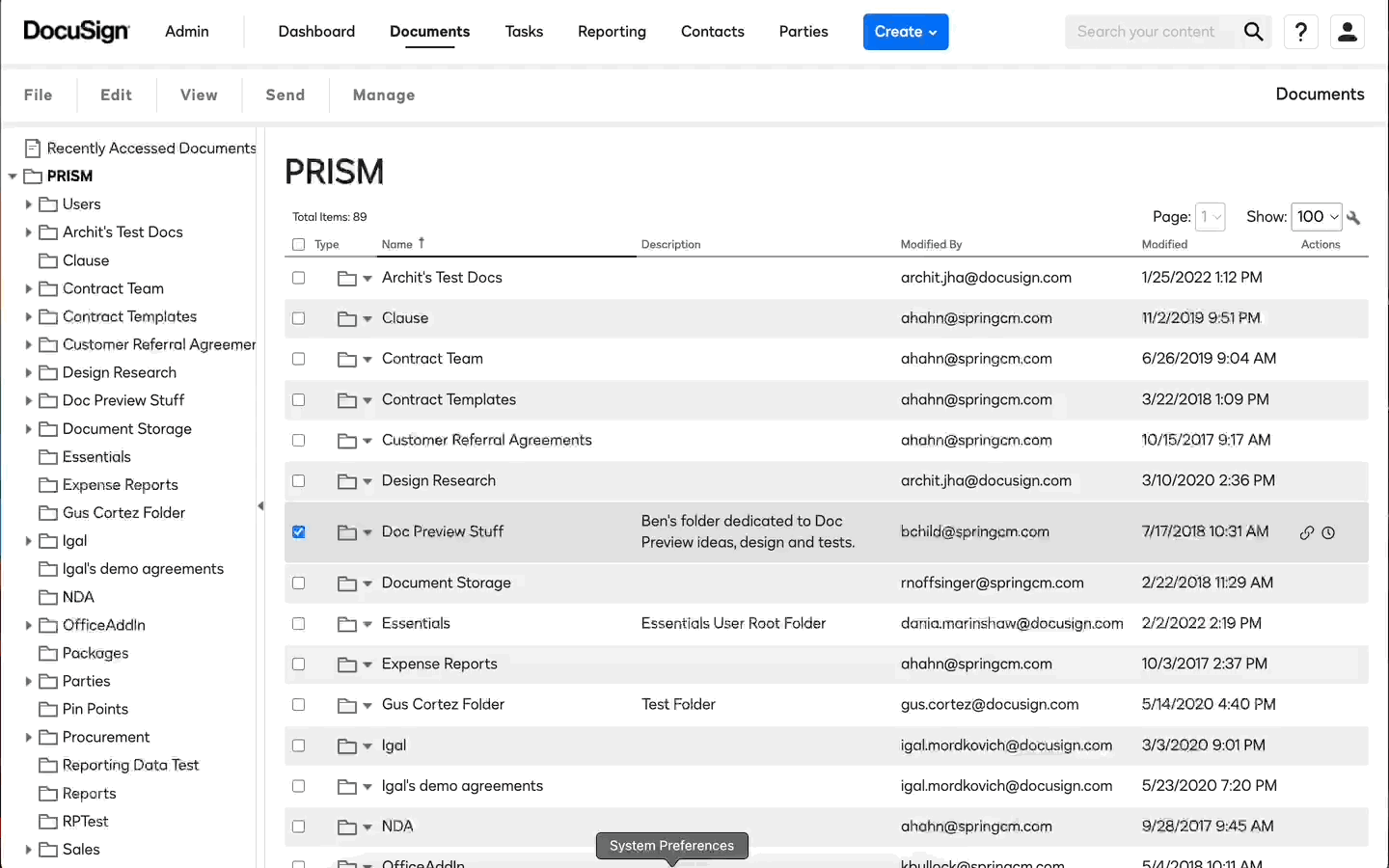
In CLM, admins could extend access of a folder to an individual user, user group, or all users that belonged to a certain user profile. Note that they weren’t able to create any access at the file level and had to operate at the file level.
Features
Shortcomings
“What if you have 1000s of users and 100s of user groups and you need access to change as the document content is modified?
I wasn’t a part of this project from the outset as this was only handed off to me at a time when most of the research had been done regarding user pain points. What I learned from consuming existing user research was that simple access control just doesn’t cut it for CLM use-cases.
CLM Customer Use-cases
From speaking to customers, we are able to collect their use cases. (Names of customers modified/hidden for confidentiality)
“bob@mail.com has view permissions for any contract that contains 'employeeIDnumber'"
– Telecom company
“Users in HR Admin have view, edit, and create permissions for contracts generated from a I-9 form"
– Telecom company
“Security group 'Default User' can only access documents with a status of “in process” or “executed"
– Law firm
“Users in the Legal group in Oil UK Limited have view and create permissions for contracts generated from a Lubricant sale and Asphalt sale tagged with 'APAC'"
– Oil & Gas company
CLM Customer Pain Points
In the existing system that operated on a folder level and did not consider document metadata for permission setting, it was not only painful but sometimes impossible to create rules like above without having to engineer a complex workflow with the help of a support team.
Problem Statement
Based on the understanding of the customer problems, we came up with the following statements that needed to be addressed through design in v1 of the ABAC model.
"How might we help Admins who want to be more self-sufficient set user access based on contract attributes so that they can ensure only the appropriate end-users have access at the right time?"
ABAC or 'Attribute based access control' was proposed as the new model to address some of the aforementioned use-cases.
Features
Shortcomings
ABAC Policy: Dynamic Access
Let’s say ‘document type’ is an attribute with possible values ▲, ■ ,● . Now, if different access levels (view, edit, no access) were assigned for each of those attribute values to the same user, their access would change the moment the value of the attribute ‘document type’ is modified.
ABAC Policy: Least Restrictive access wins
Notice how a blue persona has an ‘Edit access to a file with ▲ through the first group but an ‘View’ access to the same file through the second group. When conflicts like these arise, ‘least restrictive’ access will win. So the blue persona will have ‘Edit’ access, resolving the conflict.
By breaking down the use-case statement, we are able to figure out the variable at play
When I was was handed this project off, one exploration had already been created by my design partner Sara. After going through the research and building an understanding of the problem at hand, I revisited the existing exploration and iterated on it. We'll take a look at all the explorations we went through as a team.
1. Access rules by group (Sara's exploration)
Pros
Cons
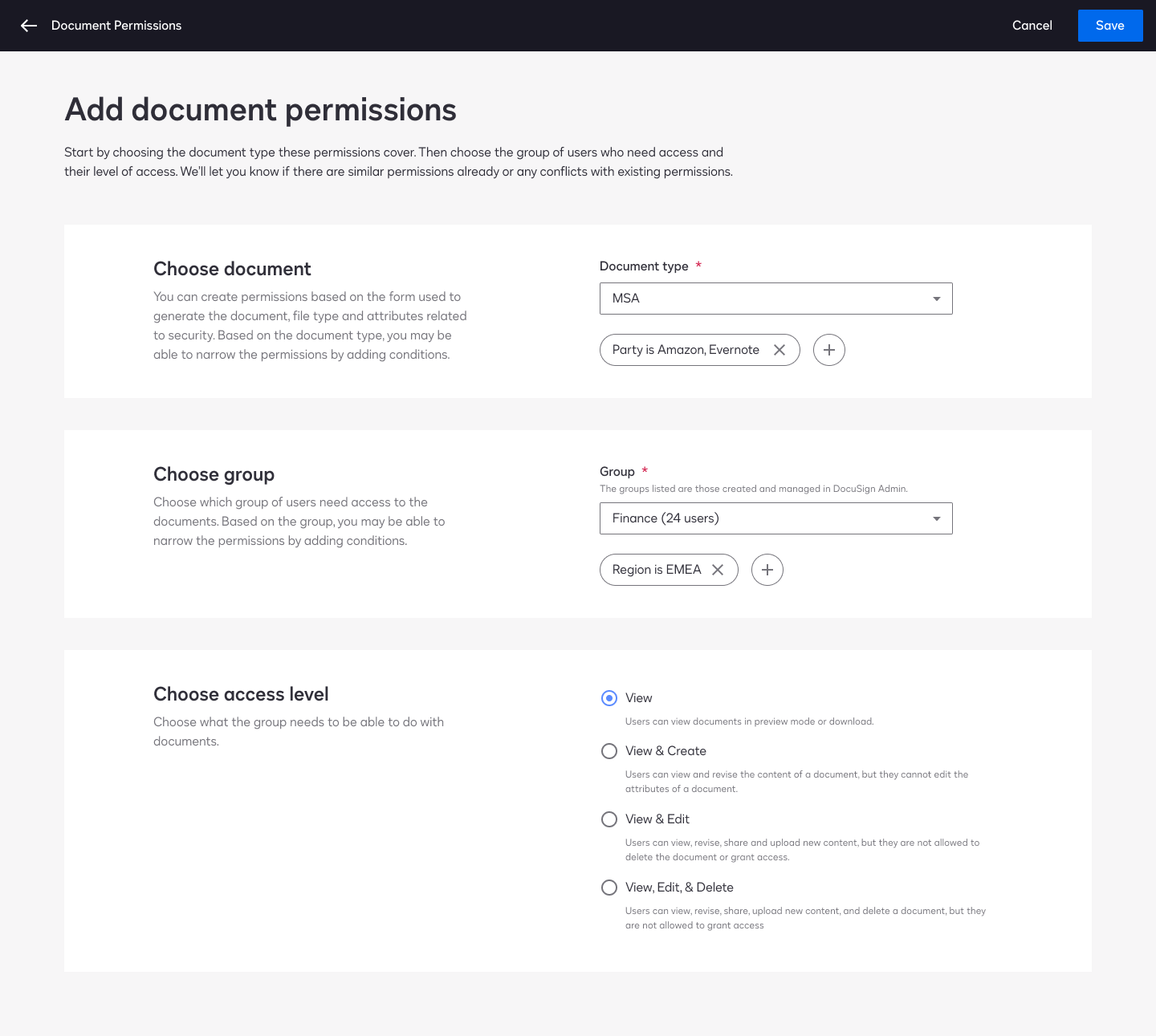
ABAC Exploration 1: Group based access rule
2. Access rules by document type (my 1st exploration)
Pros
Cons
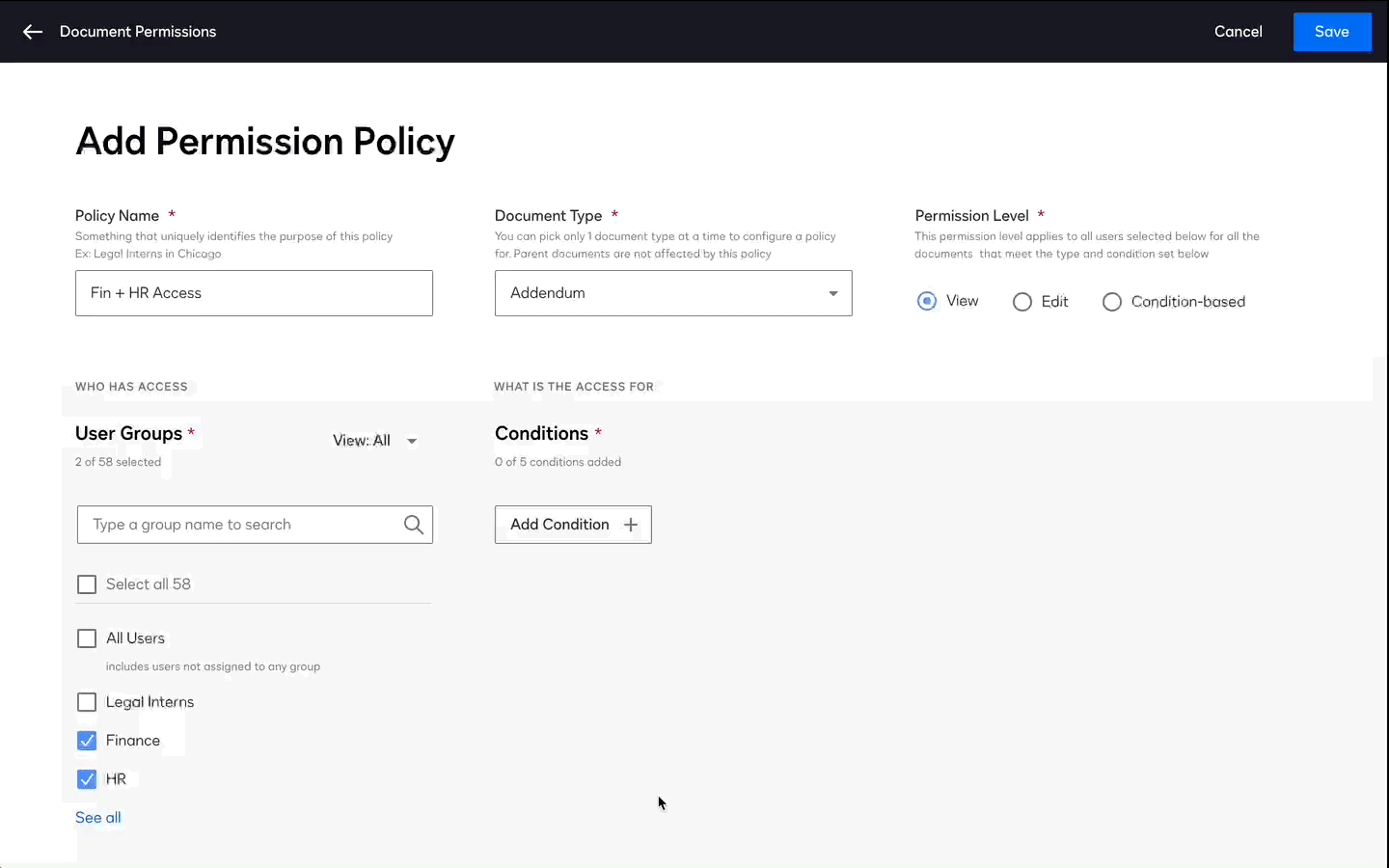
ABAC Exploration 2: Document-type based access rule
3. Open Access rules (my 2nd exploration)
Pros
Cons
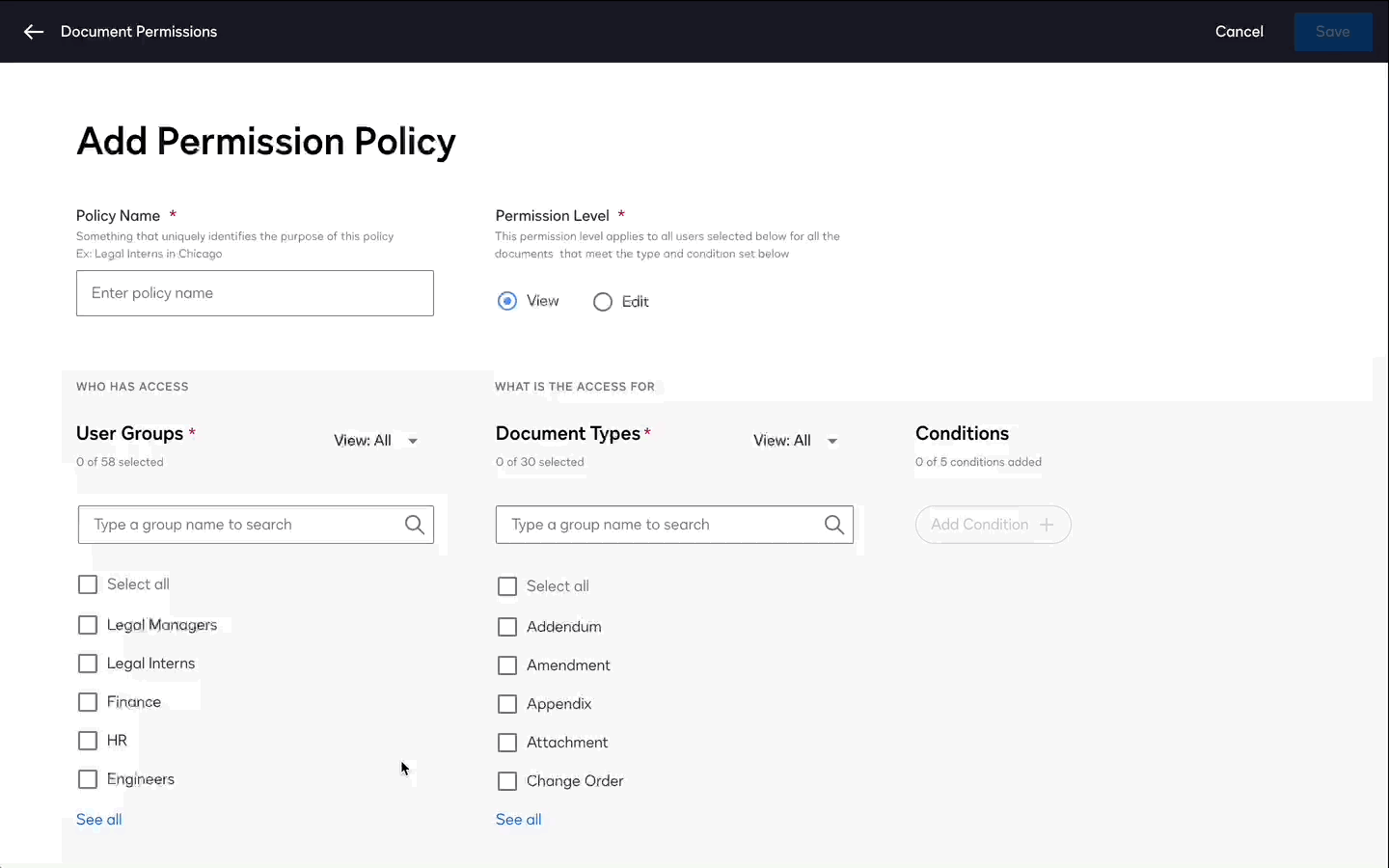
ABAC Exploration 3: Hyper-customizable access rule
4. Stepped access rule creation (my 3rd exploration & selected version)
Pros
Cons
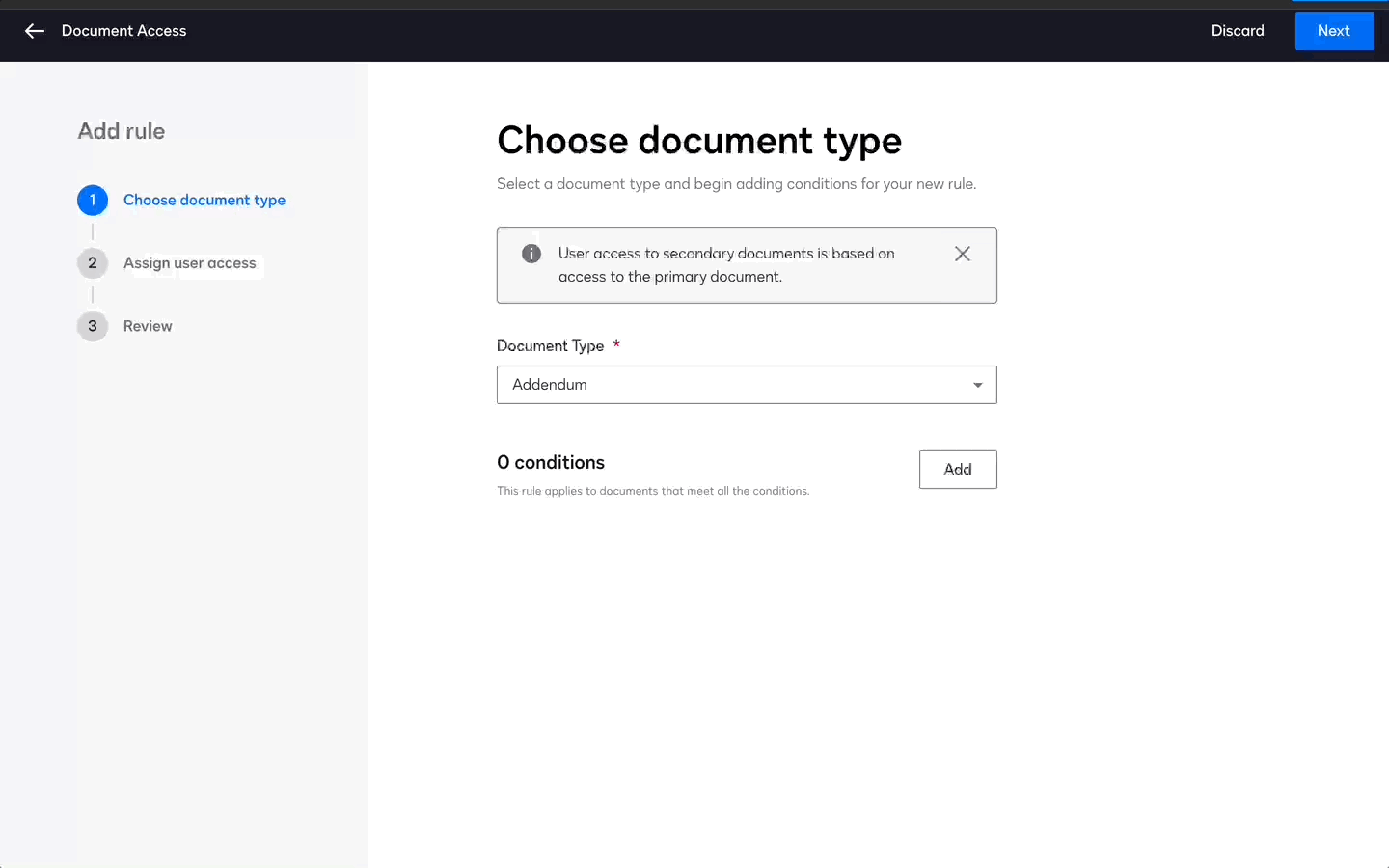
ABAC Exploration 4: Stepped access rule creation
Let's dissect the selected solution and put it to test. We'll see how it meets the requirements expressed by our customers through interviews with the help of a user story.
Scenario
Abby is an admin at Tally. There’s a group of new hires in the legal department starting soon in the new Chicago office of Tally.
Abby was asked to provide all the new legal hires Edit access to all documents of type Master Services Agreements (MSA) whose region is ‘EMEA’.
Abby noticed that there was already a user group named ‘Legal- North America’ created by her assistant with profiles for all the incoming new hires on CLM.
